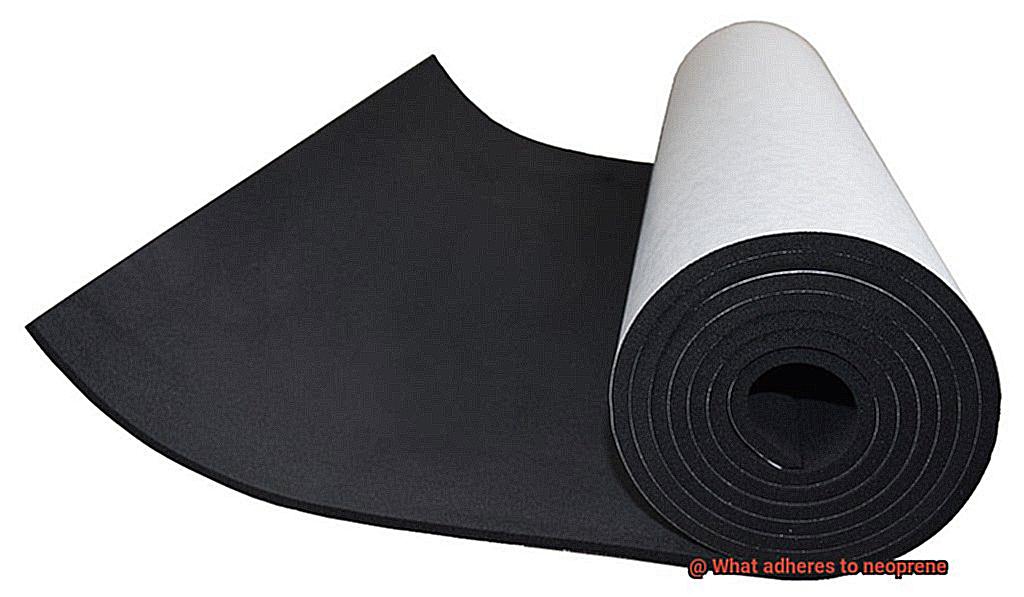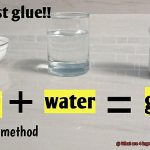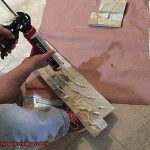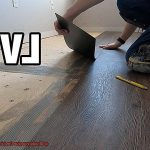Ever wondered about the secret powers of neoprene? This versatile synthetic rubber may seem inconspicuous, but its ability to adapt to countless applications is downright extraordinary. And one burning question lingers in our minds: what exactly can stick to neoprene? Prepare to be blown away as we dive into the captivating world of neoprene adhesion.
Imagine this: scorching summer heat, the aroma of salty sea breeze, and the invigorating feel of cool water against your skin. Neoprene, the unsung hero behind wetsuits and water sports gear, makes that exhilarating experience possible. But have you ever pondered over what keeps those seams intact and water out? The answer lies in neoprene’s adhesive properties.
In this blog post, we’ll unravel the mysteries of neoprene adhesion, shedding light on a wide range of materials and substances that can seamlessly bond with this magical rubber. Whether you’re a water sports enthusiast, a DIY lover, or even an industrial chemist, understanding what sticks to neoprene will prove invaluable.
From tailor-made adhesives designed specifically for neoprene bonding to everyday products that forge unbreakable connections, we’ll showcase the key players in the adhesive realm. Brace yourself for surprises as you discover that neoprene can bond with metals, plastics, fabrics, and even glass—unleashing a world brimming with limitless possibilities.
So if you’re ready to embark on a journey exploring the transformative power of neoprene adhesion, buckle up and join us as we unveil the secrets behind creating bonds that defy all odds. Get ready to unleash the hidden potential of neoprene like never before.
Adhesives That Bond Well To Neoprene
Contents
- 1 Adhesives That Bond Well To Neoprene
- 2 Contact Cement – An Ideal Solution for Bonding Neoprene
- 3 Epoxy Glue – A Strong and Durable Adhesive Option
- 4 Neoprene Cement – A Specialized Adhesive for Repairs
- 5 Double-Sided Tape – A Quick and Easy Alternative
- 6 Factors to Consider When Using Adhesives on Neoprene
- 7 Surface Preparation for a Successful Bond
- 8 Different Types of Adhesives Used On Neoprene
Neoprene, the versatile material that graces our wetsuits, gaskets, and protective gear, demands a flawless adhesive to forge a strong bond. Delve into the world of adhesives that work like magic with neoprene. Brace yourself for an enchanting journey as we explore the perfect companions for this exceptional material.
Neoprene Adhesive: The Unbreakable Union
Neoprene adhesive, tailor-made for this wonder material, guarantees an unyielding and enduring bond. Choose between the liquid or spray form for effortless application. With its resistance to water, oil, and chemicals, this adhesive triumphs in any environment.
Contact Cement: The Swift and Sure Solution
In the realm of construction, contact cement reigns supreme. Its rapid drying properties pave the way for a robust connection when two coated surfaces intertwine. Apply a thin and even coat on both surfaces, allowing ample time for complete drying before joining them. Neoprene revels in this adhesive’s prowess, making it an ideal choice for bonding with fabric or rubber.
Epoxy Glue: Strength Forged in Unity
Epoxy glues boast remarkable strength and durability, cementing their place as a top contender for neoprene bonding. By combining resin and hardener components, these adhesives create an unbreakable union that withstands extreme temperatures and environmental conditions. Be sure to select an epoxy adhesive compatible with neoprene for optimal results.
Cyanoacrylate Adhesives: The Instant Enchantment
In the realm of swift bonding, cyanoacrylate adhesives steal the show. Known as super glue or instant glue, they establish a powerful connection between surfaces in mere moments. However, exercise caution when choosing a cyanoacrylate adhesive for neoprene, as not all are compatible. Seek out a specialized adhesive designed explicitly for neoprene to avoid any mishaps and ensure a secure bond.
Double-Sided Adhesive Tapes: The Tapestry of Convenience
For those in search of a hassle-free solution, enter the world of double-sided adhesive tapes. These pre-coated wonders offer convenience without sacrificing strength. Simply peel off the backing paper and press the tape onto the desired surface. Perfect for various neoprene applications, these tapes guarantee a seamless bond.
Contact Cement – An Ideal Solution for Bonding Neoprene
Prepare to be enthralled as we delve into the captivating world of contact cement – the unrivaled hero of neoprene bonding. With its instant bonding magic, conquer-the-heat resistance, flexibility at its finest, and texture tango capabilities, contact cement is the ideal solution for all your neoprene bonding needs. So buckle up and get ready to explore the limitless possibilities of this adhesive wonder.
Instant Bonding Magic:
Imagine a world where time is of the essence, and a secure bond is crucial. Enter contact cement, the knight in shining armor. Unlike other adhesives that demand drying time or clamping, contact cement works its magic upon contact with neoprene surfaces. Witness the enchantment as an unbreakable bond forms instantly before your eyes – no waiting, just pure adhesive wizardry.
Conquer Heat and Moisture:
Neoprene thrives in extreme conditions – scorching heat and steamy moisture are its playgrounds. But fear not. Contact cement rises above these challenges with exceptional resistance. It stands strong, ensuring your bonded neoprene surfaces won’t falter under the blazing sun or during thrilling aquatic adventures. Say goodbye to adhesive anxiety and hello to unstoppable durability.
Flexibility at its Finest:
Neoprene, the elastic marvel of materials, demands a partner that can keep up with its stretchability. Enter contact cement – the perfect match. With its excellent flexibility, this adhesive allows bonded neoprene surfaces to maintain their elasticity without compromising strength. Whether crafting wetsuits or gaskets, rest assured that contact cement is there to support every stretch and bend.
Texture Tango:
In the realm of neoprene materials, textures abound – smooth or textured, each with unique characteristics. But fret not, dear adhesive enthusiasts. Contact cement is a master of all textures. It adheres flawlessly to both smooth and textured neoprene surfaces, erasing any boundaries between them. Bid farewell to texture discrimination and embrace a world where bonding knows no limits.
Epoxy Glue – A Strong and Durable Adhesive Option
Step into a realm where bonds are unbreakable and durability knows no bounds. In this world of unstoppable adhesion, epoxy glue emerges as the hero, offering a strong and durable bond that stands the test of time. Today, we delve into the wonders of epoxy glue and explore its benefits when it comes to bonding neoprene materials. Get ready to uncover the secrets of this adhesive powerhouse and learn how to apply it for a secure and long-lasting bond.
The Power of Epoxy Glue
With its reputation as a strong and durable adhesive option, epoxy glue has become a trusted choice across various industries, especially for bonding neoprene. This mighty adhesive consists of two components – resin and hardener – which, when combined, create a chemical reaction resulting in an unbreakable bond.
Benefits Galore
Imagine a world where neoprene surfaces are impervious to water or moisture. With epoxy glue, this becomes a reality as it forms a waterproof seal, making it ideal for applications like wetsuits or underwater equipment.
Additionally, its high resistance to temperature and chemicals allows it to withstand extreme conditions, ensuring the longevity of the bond. Furthermore, epoxy glue showcases its versatility by offering excellent adhesion to a wide range of surfaces, including neoprene, creating a bond that is not easily weakened over time.
Preparing for Success
Before embarking on the journey of bonding neoprene with epoxy glue, proper surface preparation is essential. Take the time to meticulously clean the neoprene surface and roughen it to enhance adhesion. These steps lay the groundwork for a bond that will withstand even the toughest challenges.
Applying Epoxy Glue Like a Pro
To achieve an optimal bond, it is crucial to apply epoxy glue evenly and in the correct amount. Following the manufacturer’s instructions to the letter ensures that every aspect of the application process is executed with precision, resulting in a bond that defies expectations.
Neoprene Cement – A Specialized Adhesive for Repairs
Today, we’re diving into the world of unstoppable adhesion with the incredible neoprene cement. This specialized adhesive is a true hero when it comes to repairing neoprene materials. So, gear up and let’s explore the wonders of neoprene cement.
Neoprene cement is not your average adhesive. It’s a contact adhesive specially designed to create a strong bond between neoprene and other materials. No matter if you’re in water sports, automotive, or manufacturing, neoprene cement is the go-to solution for repairing neoprene gear.
What sets neoprene cement apart is its exceptional adhesion, durability, and flexibility. It’s like having a super glue that can withstand the test of time and endure the rigorous demands placed on neoprene gear. Say goodbye to worries about torn wetsuits or falling-apart gloves – neoprene cement has you covered.
But wait, there’s more. Neoprene cement isn’t limited to neoprene repairs alone. This versatile adhesive can also fix rubber, leather, and fabric. Whether you’re patching up a rubber boot or mending a tear in your favorite leather jacket, neoprene cement is your trusty companion.
When it comes to application, neoprene cement offers flexibility (pun intended). Available in liquid and paste forms, you can choose the option that suits your repair needs best. Just remember to follow the manufacturer’s instructions for proper application and maximum bond strength.
Patience is key when working with neoprene cement. It typically requires several hours or even overnight to fully cure and achieve its maximum strength. So, plan your repair time accordingly if you’re eager to get back in the water or on the road.
Now, let’s talk about safety. Neoprene cement has a strong odor, so it’s essential to apply it in a well-ventilated area. To protect yourself further, use personal protective equipment such as gloves and masks.
Finding neoprene cement is a breeze. It’s widely available in stores that sell outdoor gear, sporting goods, or specialty adhesives. If convenience is your thing, you can also purchase it online from various retailers and manufacturers.
Double-Sided Tape – A Quick and Easy Alternative
Double-sided tape is a game-changer when it comes to sticking items to neoprene. This synthetic rubber material, found in wetsuits and laptop sleeves, is known for its flexibility and water resistance. But when it comes to adhesion, traditional options like glue or epoxy can be messy and time-consuming. That’s where double-sided tape swoops in to save the day.
This tape is a neoprene enthusiast’s dream come true. Made with acrylic or rubber adhesive, it provides a strong bond that won’t let you down. And the best part? It has adhesive on both sides. This means it securely sticks to both the neoprene material and the item you want to adhere – no more worrying about things falling off or coming loose.
Using double-sided tape on neoprene is a breeze. Just cut the tape to your desired size or shape, peel off one side’s protective backing, and press it firmly onto the neoprene surface. Then, peel off the other side’s backing and press your item onto the exposed adhesive. Voila. Everything stays in place without any damage or alteration to the neoprene material.
But here’s where it gets even better. Double-sided tape is incredibly versatile. It’s perfect for attaching patches, labels, or small accessories to neoprene items like wetsuits or laptop sleeves. And if you ever need to remove or reposition something? No problem at all. Simply peel off the tape and reapply it elsewhere. It’s as easy as pie.
Now, keep in mind that double-sided tape may not be suitable for all neoprene applications. For heavy-duty situations or extreme conditions, like attaching larger objects or securing neoprene firmly, you might want to consider other adhesives such as epoxy or specialized neoprene glue. Additionally, the effectiveness of double-sided tape can vary depending on factors like neoprene texture and thickness, as well as the weight and surface area of the item to be adhered. To be on the safe side, it’s always a good idea to test a small area before committing fully.
Factors to Consider When Using Adhesives on Neoprene
Neoprene, the resilient wonder material, has earned its reputation for its exceptional properties. But even this superhero needs a sidekick to achieve its full potential. Enter adhesives, the unsung heroes that bring neoprene together. However, not all adhesives are created equal, and choosing the wrong one can lead to a sticky situation. In this guide, we will explore the crucial factors to consider when using adhesives on neoprene, ensuring a bond that is as strong as it is enduring.
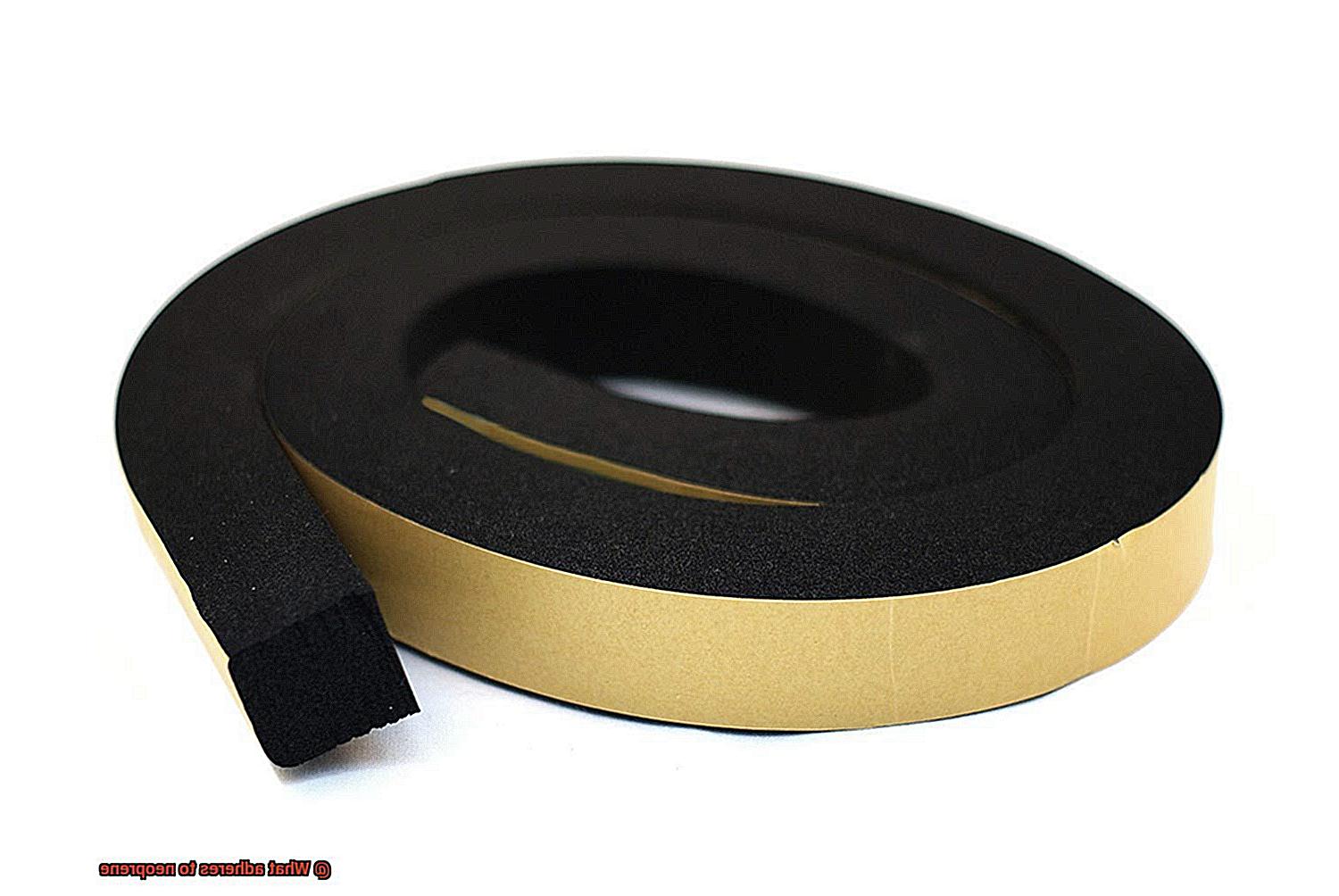
Factor 1: Compatibility – The Perfect Match
Neoprene’s unique composition grants it unparalleled resistance to oil, chemicals, and extreme temperatures. To ensure a bond that holds strong, it is imperative to select an adhesive specifically designed for neoprene. Not all adhesives can effectively bond with this remarkable material, so choose wisely to ensure compatibility.
Factor 2: Type of Adhesive – Unleash the Right Power
The adhesive kingdom offers an array of options, each with their own set of strengths and weaknesses. Contact cement, cyanoacrylate (super glue), epoxy, and neoprene-based adhesives are commonly used for bonding neoprene. The choice of adhesive should align with the intended purpose of the bonded neoprene. Take your time to explore and select the adhesive that possesses the desired qualities for your specific application.
Factor 3: Surface Preparation – A Solid Foundation
Building a sturdy structure starts with a solid foundation, and bonding neoprene is no different. Proper surface preparation is vital for achieving a robust bond. Cleanliness is paramount. Ensure the neoprene surface is spotless, dry, and free from any contaminants such as dirt, grease, or oils. Utilize a mild detergent or appropriate solvent for a thorough cleaning. Additionally, lightly roughening the surface with sandpaper or a fine grit abrasive can significantly enhance adhesion.
Factor 4: Application Method – Precision in Motion
The method of adhesive application plays a pivotal role in determining the strength of the bond. Brushes, rollers, or sprays are common tools used for applying adhesives. Consider the size and shape of the neoprene pieces being bonded and select the appropriate application method. Adhere to the manufacturer’s instructions to ensure precise application, as improper technique can lead to weak bonds.
Surface Preparation for a Successful Bond
Surface preparation is the key to unlocking successful bonding with neoprene. This versatile material, beloved in various applications, presents a challenge due to its low surface energy and resistance to many adhesives. But fear not, my friends, for I am here to guide you through the intricate art of surface preparation and help you achieve the strongest bond possible.
Our journey begins with a pristine canvas – the neoprene surface. Before you embark on your bonding adventure, it is crucial to cleanse the surface of any dirt, dust, or grease. Armed with a gentle detergent or solvent and a clean cloth or sponge, you must wipe away all impurities. But beware. Neoprene is delicate, so tread lightly and avoid harsh chemicals that could harm this precious material.
Now that your neoprene is as pure as freshly fallen snow, it’s time to roughen its smooth and non-porous surface. This step is essential to provide more surface area for bonding and establish a mesmerizing mechanical interlocking dance between the adhesive and neoprene. You can achieve this effect by delicately sanding the neoprene with fine-grit sandpaper or employing an abrasive pad specifically designed for this purpose. It’s like giving your neoprene a makeover, transforming it into a magnet for adhesion.
But wait. Before you rejoice in your newly transformed neoprene surface, there’s one more task at hand. You must rid it of any loose particles or debris that might have been generated during the roughening process. With a gentle stroke of a clean cloth or a burst of compressed air, you shall remove all remnants of imperfection. Now, my friend, your neoprene surface is ready to embrace greatness.
Enter the heroes of surface preparation – primers and adhesive promoters. These magical concoctions possess the power to enhance the bonding properties of neoprene through a chemical reaction with the adhesive.
With their carefully crafted formulas, they break down the smooth surface of neoprene, rendering it more receptive to adhesives. However, heed this warning: follow the instructions of the manufacturer with utmost care.
Apply the primer or adhesive promoter evenly and allow it to dry for the recommended duration before applying the adhesive. Remember, not all adhesives require this extra boost for bonding with neoprene, as some are specifically formulated for this purpose.
Different Types of Adhesives Used On Neoprene
Neoprene, the versatile material found in products ranging from wetsuits to medical braces, requires the right adhesive for a secure bond. In this article, we will delve into the world of neoprene adhesives, exploring their unique properties and applications.
Contact Cement: The Superhero of Instant Bonding
Contact cement is a neoprene adhesive with superpowers. It creates an instantaneous and robust bond when two surfaces coated with it are pressed together. This adhesive excels in bonding neoprene to itself or other materials like rubber and fabric. Its strength, flexibility, and resistance to heat and chemicals make it the go-to choice for projects requiring a reliable and durable bond.
Epoxy Glue: The Dynamic Duo
Epoxy glue is a mighty adhesive composed of two components – a resin and a hardener – that must be mixed before use. This dynamic duo offers exceptional bonding strength and durability, making it perfect for adhering neoprene to challenging surfaces such as metal or plastic. Its resistance to moisture, temperature variations, and chemicals ensures a solid bond even in harsh environments.
Neoprene Cement: The Specialist’s Secret Weapon
When it comes to repairing tears or holes in neoprene wetsuits, neoprene cement emerges as the specialist’s secret weapon. This specialized adhesive is formulated specifically for bonding neoprene materials together, offering a strong and flexible bond. With its ability to withstand exposure to water, heat, and extreme conditions commonly encountered in water sports activities, neoprene cement is a trusted choice for neoprene repairs.
Double-Sided Adhesive Tapes: The Quick Fix
For those seeking quick and convenient solutions, double-sided adhesive tapes prove to be the ultimate quick fix for neoprene bonding. These tapes come pre-coated with adhesive on both sides, providing a hassle-free alternative to liquid adhesives. They offer a strong bond and can be easily applied by simply peeling off the backing paper and pressing the tape onto the desired surface.
Surface Preparation: The Key to Success
Proper surface preparation is crucial when working with neoprene adhesives. Ensure that the neoprene surface is clean, free from dirt, oils, or any other contaminants that may hinder adhesion. Wiping the surface with a mild detergent or using a cleaning solution specifically designed for neoprene will ensure optimal bonding. By prioritizing surface preparation, you lay the foundation for a strong bond and maximize the effectiveness of the adhesive.
dc1Gd3j1CCg” >

